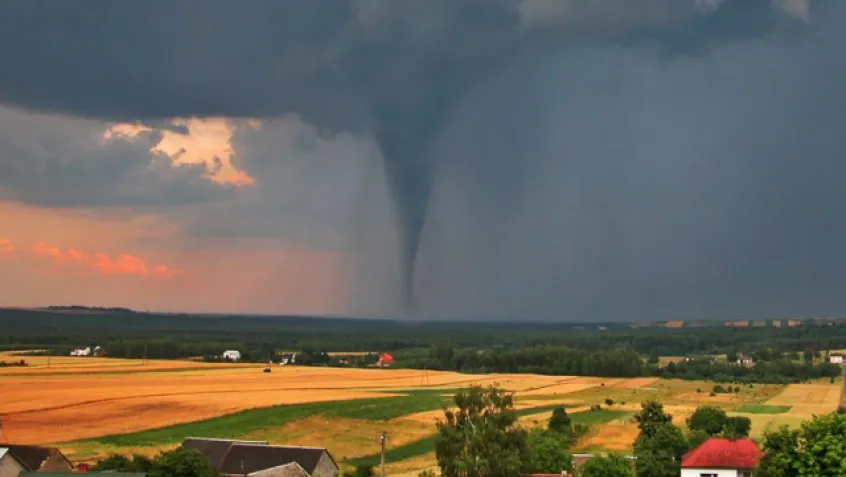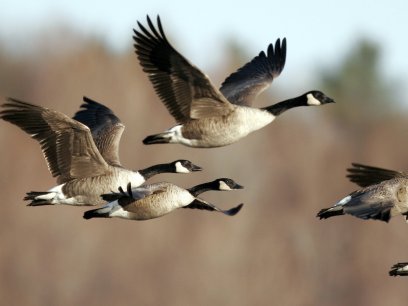
Communications researchers and other scholars sometimes point to climate change as a âwicked' issue in part because of the verbal traps and pitfalls associated with it. That's just what makes it a fertile area for providing Warning Coordination Meteorologists (WCMs) and broadcast meteorologists helpful insights and resources.
An October 2013 Science magazine cover story is headlined: “Communication in Science: Pressures and Predators.”
An October 2011 Physics Today feature advises “It is urgent that climate scientists improve the ways they convey their findings” to a poorly informed public.
The Psychology of Climate Change Communication: A Guide for Scientists, Journalists, Educators, Political Aides and the Interested Public â that's the title of a report from the Center for Research on Environmental Decisions (CRED) at Columbia University.
The list could go on, but the point is simple: Those communicating information on climate â including the scientists responsible for generating the research findings in the first place â have to mind their Ps and Qs in discussing their work with the general public and with nontechnical audiences. It brings to mind the old World War II precaution “Loose lips sink ships.”
And no one is immune from it, no one “above” it. Take WCMs and broadcast meteorologists, especially proficient in communicating on frequently complex science and weather issues to broad lay audiences. They can do so, quite literally, “to the second.” But even they need and welcome a helpful assist when it comes to addressing what communications scholars have labeled the “wicked” issues surrounding effective communications on climate change.
In many ways climate science, as with other disciplines and specialty fields, has a language all its own, and even with something of an Alice in Wonderland aspect to it in some ways.
What does the audience understand?
Do you think you understand (and your audience does) the meaning of the term “theory”? Or “enhance”?
How about “positive feedback”? Does that conjure up in your mind the last job performance review from a demanding boss? And “aerosol”? Does it bring up visions of spray cans, the “ozone hole” and CFCs? Or of tiny atmospheric particles, often shorthanded as “PM 10”?
Even the word “theory” means different things to the person on the street and the scientist in the field or in the laboratory. The former pretty much equates it with “hunch,” while the latter interprets it as applying to the current evidence-based understandings pending further evidence-based and peer-reviewed vetting and interpretations.
Writing in Physics Today in October 2011, Scripps Institution of Oceanography scientist Richard C.J. Somerville and climate communications professional Susan Joy Hassol emphasized that “Many words that seem perfectly normal to scientists are incomprehensible jargon to the wider world.” They basically stressed the benefits of using “plain English” rather than professional jargon in discussing climate issues:
Rather than âanthropogenic,' scientists can say âhuman-caused.' Instead of âspatial' and âtemporal,' they could say âspace' and âtime.' They could use familiar units; for the American public, that means feet rather than meters, and Fahrenheit rather than Celsius. And they shouldn't expect a lay audience to do mental arithmetic.
They encouraged use of “metaphors, analogies, and points of reference” to help lay audiences better understand mathematical points or numerical results. “Vivid illustrations help,” they wrote, emphasizing a point broadcast meteorologists are certain to agree with.
What does that word really mean?
Among the concerns expressed by a number of professional climate science and science communicators is that common misunderstandings of language can actually have a backlash effect. Somerville and Hassol, for instance, pointed to frequent confusion among lay persons over the issues of the stratospheric ozone hole and climate change, two similar but separate issues: “Scientists should avoid talking about aerosols and climate in a way that reinforces this confusion,” they advised, a suggestion that WCMs and broadcast meteorologists might also want to consider.
They also provided a useful table of terms having one meaning among scientists and a different, and sometimes contradictory, one among the public:
| Scientific Term | Public Meaning | Better Choice |
| Enhance | Improve | Intensify, increase |
| Aerosol | Spray can | Tiny atmospheric particle |
| Positive Trend | Good trend | Upward trend |
| Positive feedback | Good response, praise | Vicious cycle, self-reinforcing cycle |
| Theory | Hunch, speculation | Scientific understanding |
| Uncertainty | Ignorance | Range |
| Error | Mistake, wrong, incorrect | Difference from exact true number |
| Bias | Distortion, political motive | Offset from an observation |
| Sign | Indication, astrological sign | Plus or minus sign |
| Values | Ethics, monetary value | Numbers, quantity |
| Manipulation | Illicit tampering | Scientific data processing |
| Scheme | Devious plot | Systematic plan |
| Anomaly | Abnormal occurrence | Change from long-term average |
The term “consensus” suggests to some in the public that “global warming is just a matter of opinion,” they wrote, rather than an evidence-based theory tested and retested in ways consistent with the scientific method. And the verb “contributes” might be misunderstood by the public to imply that the contribution of human activities to a warming of the climate “could be a small contribution, when in fact it is the primary cause,” Somerville and Hassol wrote.
Creating a Lexicon
In communicating with the public about the conclusions reached by the Intergovernmental Panel on Climate Change (IPCC), the authors some years ago adopted a carefully thought out lexicon involving words such as “unlikely,” “likely,” “very likely” and “extremely likely,” with each premised on increasing levels of confidence in the relevant research. But even those terms meant to communicate a high level of confidence in the likelihood are subject to being interpreted as implying more uncertainty that the authors may have intended in a particular case.
The advice offered by Somerville and Hassol repeats some similar points made in America's Climate Choices: Informing an Effective Response to Climate Change, a suite of congressionally mandated studies by the The National Academies' National Research Council. It's one of a number of resources and efforts reinforcing these points about climate communications and aimed at improving climate communications â and with it public understanding â in various quarters.
In addition to the terms-having-different-meanings table provided by Somerville and Hassol, for instance, a companion effort done by the Center for Research on Environmental Decisions at Columbia University reiterates some of those same points and adds others. Their chart is published as part of a well worthwhile document The Psychology of Climate Change Communication: A Guide for Scientists, Journalists, Educators, Political Aides, and the Interested Public, available from a NOAA web site.
The Difference between "Weather" and "Climate"
Many meteorologists over time have come to learn and appreciate the essential differences between the basic terms “climate” and “weather,” and more than a few have probably encountered reminders such as: “Climate tells me what wardrobe I need to have, and weather tells me what clothes to wear that day.” It's in handling the more arcane word games and points of semantics that they might find most instructive. Meteorologists certainly are wordsmiths in dealing with the weather. A challenge many will face, and welcome, involves how they can become equally adept in communicating on climate change in ways that inform without inflaming; educate without being academic; and given the time constraints they inevitably face on-air, are concise, yet accurate.
References and Resources
- Climate Communication: Science and Outreach, an online site managed by Susan Joy Hassol.
- America's Climate Choices: Informing an Effective Response to Climate Change, National Research Council, 2011, National Academy of Sciences.
- Climate Literacy: The Essential Principles of Climate Sciences: A Guide for Individuals and Communities, National Oceanic and Atmospheric Administration (NOAA), March 2009.
- Don't Be Such a Scientist: Talking Substance in an Age of Style, Randy Olson, Island Press, 2009. h
- Communicating the Science of Climate Change, Richard C.J. Somerville and Susan Joy Hassol, Physics Today, October 2011.
- Earth: The Operators' Manual, Richard B. Alley, 2011, W.W. Norton and Company.
- The Rough Guide to Climate Change: The Symptoms, The Science, The Solutions, 2011, Robert Henson, Roughguides.com.
- The Thinking Person's Guide to Climate Change, 2014, Robert Henson, AMS Books.
- Understanding and Responding to Climate Change: Highlights of National Academies Reports, 2008, The National Academies.
- Climate Change 101: Understanding and Responding to Global Climate Change, Pew Center on Global Climate Change, undated, Pew Center on Global Climate Change.
- Science, Evolution, and Creationism, National Academy of Sciences/Institute of Medicine, 2008, The National Academies.
About the Author
Morris A. (Bud) Ward, editor of Yale Climate Connections, is a proven and widely experienced communicator and educator on environmental, energy and climate change issues. He has an extensive publishing history including hundreds of bylined news and analysis articles and authorship or co-authorship of five professional books. He has conducted numerous first-hand workshops for reporters, editors and policy makers on issues involving journalism/communications, climate change and environmental risk. He writes, speaks and teaches regularly on issues related to climate change and on the changing nature of journalism and mass communications in modern society.


